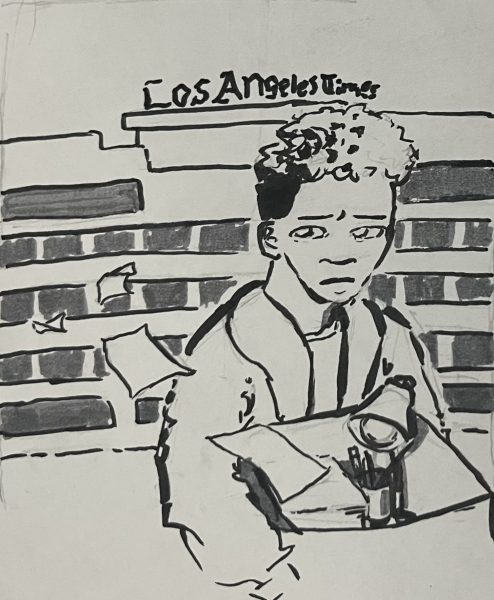Editorial: The Benefits of Special Education Inclusion
December 13, 2019
This year, Venice High School began a new program to integrate special education students into general education classes. About seven teachers, mostly teaching 9th grade classes, volunteered to participate in special education inclusion. This meant that special ed students, with their aides, are now taking classes together with students in the general school program.
“UTLA made an agreement with the district about special ed inclusion,” said Mr. Soni Lloyd, UTLA chair and teacher. “Before, our special ed kids were in a special day class of six or seven kids. Now, they’re coming into the general ed classes with other students.”
The sudden change this year may be confusing for both sides, as they aren’t used to this kind of interaction within the school. The integration may feel harsh for some students, but the inclusion of special ed students in general education brings many positive benefits to the school environment.
A great way inclusion benefits students from both sides is by exposing them to each other. Inclusion allows general ed and special ed students to interact with one another and develop social skills on how to talk to people who grew up differently than them.
Since the inclusion is taking place in the classroom, special ed and general ed students will be able to interact with one another under the guidance and supervision of their teachers, allowing a more controlled environment for inclusion.
It’s also important to bring equality between general ed and special ed students. If special ed students are treated similarly to other students, they will feel more included and prepared for life.
“It’s important…to realize that special education students are first and foremost general education students,” said Carl A. Cohn, EdD, executive director of the California Collaborative for Educational Excellence, in the article “4 Benefits of Inclusion Classrooms” on Understood.org.
Inclusion has been successful in helping students in the past. According the National Center for Education Restructuring and Inclusion, students with disabilities in inclusive classrooms had improved performance in standardized tests, mastery of IEP (Individualized Education Program) goals, grades, and behavior and motivation in the classroom.
Right now one of the main problems with inclusion at Venice is class sizes. Many classes are stacked with students because of the influx of special education kids, resulting in crowded classes.
“You might have a class with 30 regular kids and 10 special ed kids,” said Mr. Lloyd. “And there aides are with them too, so you end up having like 40 people in there.”
The school is currently writing a plan for special education inclusion for next year, to try to improve some areas of the program.
“In January and February we’ll be working on a new plan,” said Mrs. Jaclynne Kroskrity, teacher and department chairperson for the Special Education Department. “There will be a committee representing the entire school, and they will be working together to write a new plan.”
Inclusion is an important process that needs to be done the right way, in order to ensure all our students are given the right path.









